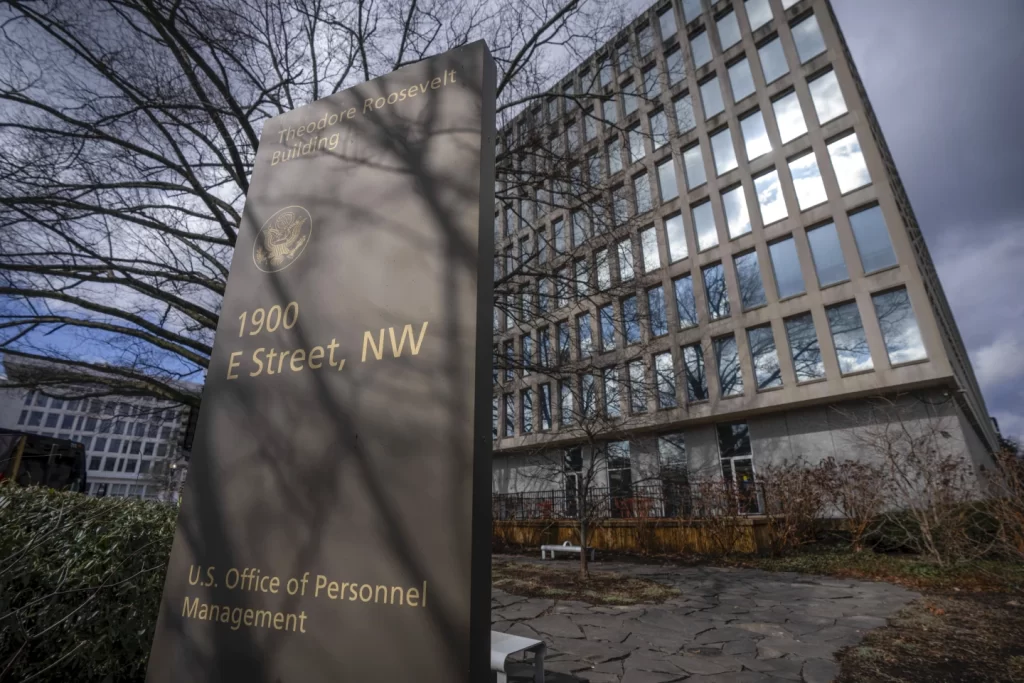
WASHINGTON — Former President Donald Trump has plans to radically reshape the federal government if he returns to the White House, from promising to deport millions of immigrants in the U.S. illegally to abolishing government agencies and firing tens of thousands of workers and replacing them with loyalists.
Liberal organizations in Washington are backing President Joe Biden and say they expect Trump to lose. But they’re quietly trying to install roadblocks just in case.
A collection of activists, advocates and legal experts is promoting new federal rules to limit presidential power while urging Biden’s White House to do more to protect his accomplishments and limit Trump in a possible second term. All of that is happening with far less fanfare than plans by Trump supporters to create a conservative government-in-waiting via an effort known as “Project 2025.”
The Office of Personnel Management, the federal government’s chief human resources agency, will finalize a rule by April against reclassifying tens of thousands of workers so they can be more easily fired, according to OPM spokesperson Viet Tran. A future administration would likely have to spend months or years unwinding the rule.
Those supporting the effort are open about its limits.
“My impression is the Biden administration is taking very seriously that potential threat and is trying to do things now,” said Michael Linden, a former executive associate director of the White House Office of Management and Budget under Biden. But he added, “Nobody should be under any illusion that there’s anything that this president can do in advance to prevent the next president from doing things that are very damaging, potentially catastrophically.”
“There isn’t any magic bullet,” Linden said.
The White House is reluctant to talk about a second Trump term before Election Day, as that would imply it has plans for if Biden loses.
Trump “is already telegraphing plays straight out of the authoritarian playbook — gutting the civil service of people he deems disloyal and plotting revenge on his political enemies,” said Kevin Munoz, a spokesman for Biden’s campaign. “There’s one way of stopping Trump’s dangerous and un-American plans: reelecting President Biden.”
Still, Norm Eisen, who was chief ethics counselor to President Barack Obama, wants Biden to issue executive orders that could limit the use of the military domestically. Trump has talked about sending troops to the southern border or to Democrat-run cities dealing with rising crime rates.
“I understand the potential reluctance to signal any risk here as a political matter and that’s not an illegitimate consideration,” said Eisen, a senior fellow in governance studies at the left-leaning Brookings Institution. “But there are countervailing considerations given the threat that we face.”
Central both to Trump’s plans and the Democratic efforts to impede him is deciding how many government workers can be removed by a new administration, potentially to be replaced with loyalists.
Trump at the end of his term sought to reclassify thousands of the more than 2 million federal employees, stripping them of job protections and making them at-will employees under a new classification known as “Schedule F.” Around 4,000 federal employees are now considered political appointees who typically change with each administration. Creating Schedule F could have increased that more than tenfold.
Biden revoked that order but Trump says he’ll revive it should he win. And conservatives preparing thick policy books are strategizing on how to fire employees to make more room for Trump appointees.
A spokesman for Trump’s campaign did not answer a message seeking comment and the Heritage Foundation, which is running “Project 2025,” declined to answer written questions. But Heritage’s president, Kevin Roberts, told The New York Times Magazine that he wants to see “destruction” in the government.
“People will lose their jobs. Hopefully their lives are able to flourish in spite of that,” Roberts said. “Buildings will be shut down. Hopefully they can be repurposed for private industry.”
The OPM in September proposed the rule making it more difficult to reclassify employees and allowing anyone moved into a potential “Schedule F” to retain their protections against being fired.
It’s been endorsed by 27 advocacy organizations whose policy interests don’t always align.




